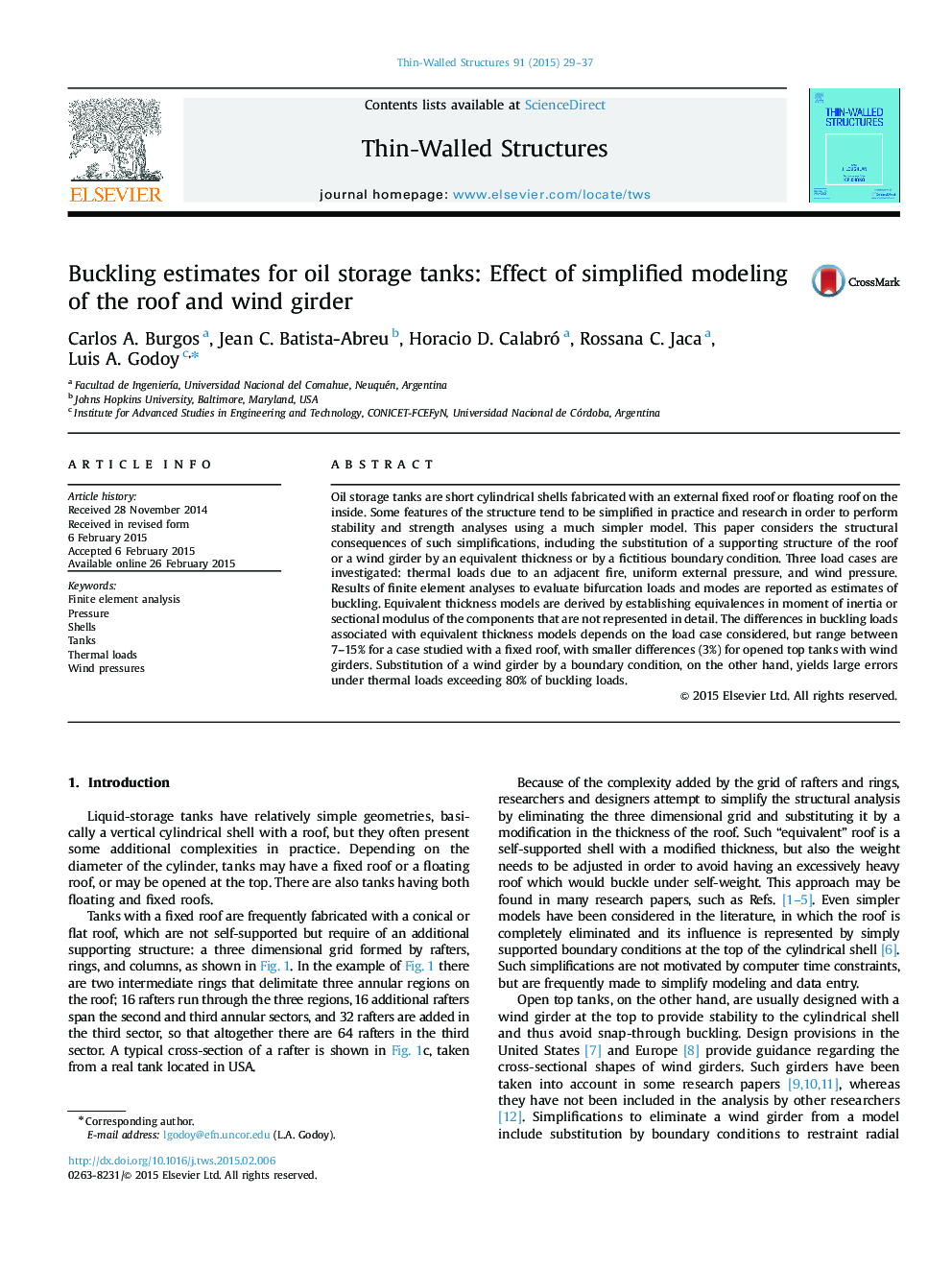| Article ID | Journal | Published Year | Pages | File Type |
|---|---|---|---|---|
| 308618 | Thin-Walled Structures | 2015 | 9 Pages |
•Substitutions of supporting structures of the roof or wind girders by equivalent thickness or fictitious boundary condition are investigated.•Loads include temperature due to an adjacent fire, uniform external pressure, and wind pressure.•Buckling is identified by means of finite element analysis.•Equivalent thickness models for fixed roof induce acceptable errors, with smaller differences for opened top tanks with wind girders.•Substitution of a wind girder by a boundary condition yields large errors under thermal loads.
Oil storage tanks are short cylindrical shells fabricated with an external fixed roof or floating roof on the inside. Some features of the structure tend to be simplified in practice and research in order to perform stability and strength analyses using a much simpler model. This paper considers the structural consequences of such simplifications, including the substitution of a supporting structure of the roof or a wind girder by an equivalent thickness or by a fictitious boundary condition. Three load cases are investigated: thermal loads due to an adjacent fire, uniform external pressure, and wind pressure. Results of finite element analyses to evaluate bifurcation loads and modes are reported as estimates of buckling. Equivalent thickness models are derived by establishing equivalences in moment of inertia or sectional modulus of the components that are not represented in detail. The differences in buckling loads associated with equivalent thickness models depends on the load case considered, but range between 7–15% for a case studied with a fixed roof, with smaller differences (3%) for opened top tanks with wind girders. Substitution of a wind girder by a boundary condition, on the other hand, yields large errors under thermal loads exceeding 80% of buckling loads.
